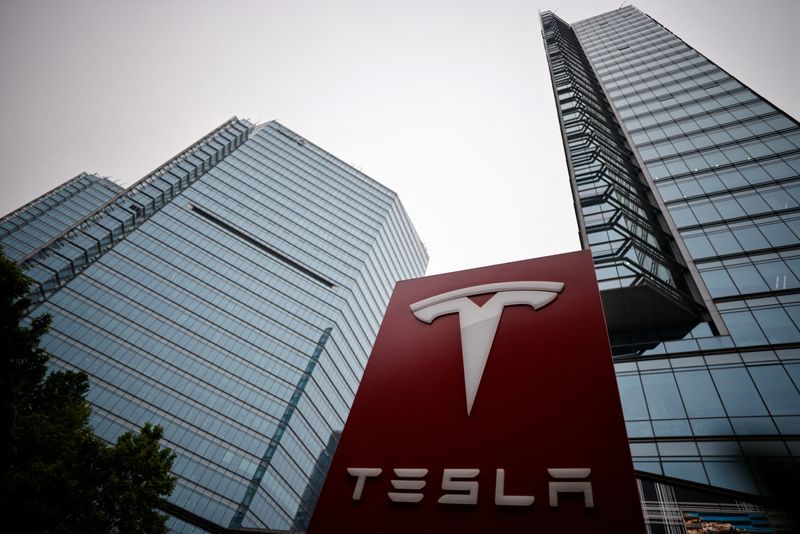By Dan Levine and Hyunjoo Jin
(Reuters) - An attorney suing Tesla (NASDAQ:TSLA) over a fatal accident cited an internal safety analysis conducted by the company that showed it knew about a steering malfunction in its Autopilot driver assistant feature about two years earlier.
The disclosure came during closing arguments on Tuesday in a California state court in the first U.S. trial over allegations that Autopilot led to a death. The plaintiffs are seeking a combined $400 million jury award, excluding punitive damages. The trial's outcome could help shape similar cases across the country.
The civil lawsuit alleges the Autopilot system caused owner Micah Lee's Model 3 to suddenly veer off a highway east of Los Angeles at 65 miles per hour (105 km per hour), strike a palm tree and burst into flames, all in the span of seconds.
The 2019 crash killed Lee and seriously injured his two passengers, including a then-8-year-old boy who was disemboweled, court documents show. The lawsuit, filed against Tesla by the passengers, claims that Autopilot was defective.
Tesla has denied liability, saying Lee consumed alcohol before getting behind the wheel. The electric-vehicle maker also claims it was unclear whether Autopilot was engaged at the time of the crash.
Tesla has been testing and rolling out its Autopilot and more advanced Full Self-Driving (FSD) system, which Chief Executive Elon Musk has touted as crucial to his company's future but which has drawn regulatory and legal scrutiny.
Jonathan Michaels, who represents the passengers, showed jurors a 2017 internal Tesla safety analysis identifying "incorrect steering command" as a defect, involving an "excessive" steering wheel angle.
"They predicted this was going to happen. They knew about it. They named it," Michaels said. Tesla developed a protocol to deal with customers who experienced it, he said, and instructed employees to accept no liability or responsibility for the problem.
Tesla attorney Michael Carey said the safety analysis did not identify a defect, but rather was intended to help the company address any issue that could theoretically arise with the vehicle. The automaker subsequently engineered a system that prevents Autopilot from executing the turn which caused the crash.
That safety system, Carey said, "is a brick wall standing in the way of plaintiffs' claim," noting that no other Tesla car had behaved as the vehicle did in this crash.
Michaels argued Tesla released Autopilot in an experimental stage because the company desperately needed to increase market share.
"They had no regard for the loss of life," he said.

Carey countered that the simplest explanation for the crash was human error, and asked jurors to resist awarding damages solely because of the victims' severe injuries.
"Empathy is a real thing, we're not saying its not," Carey said. "But it does not make cars defective."